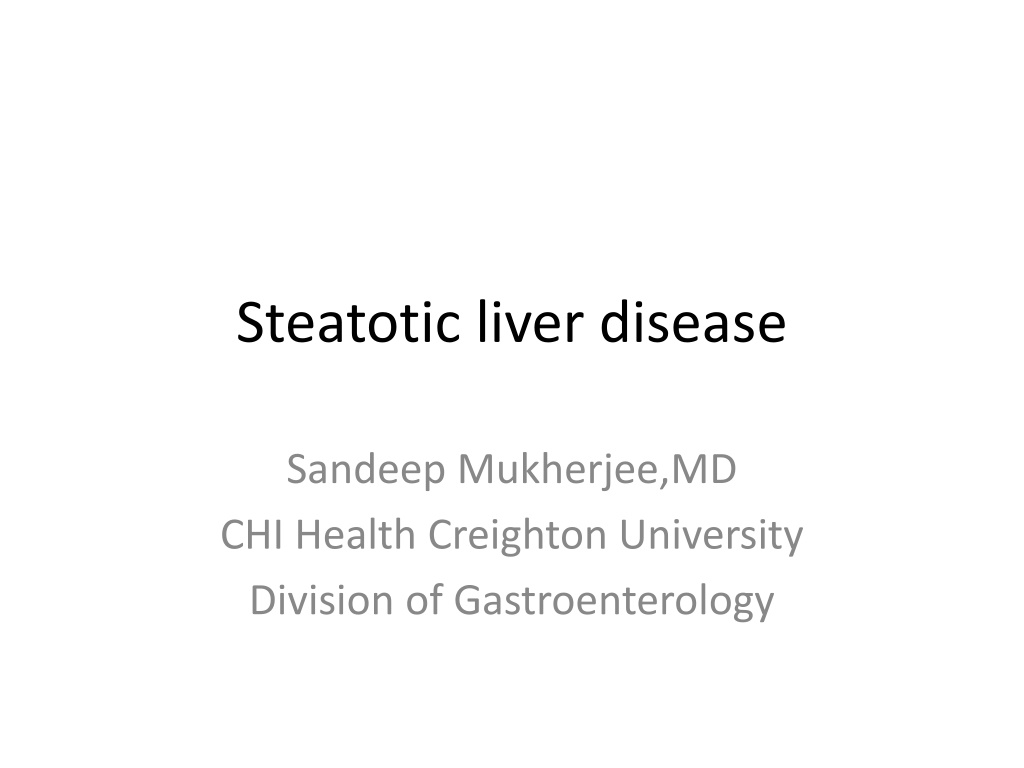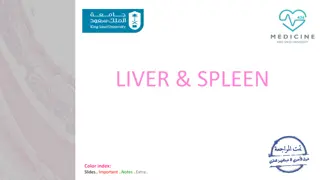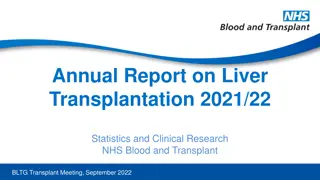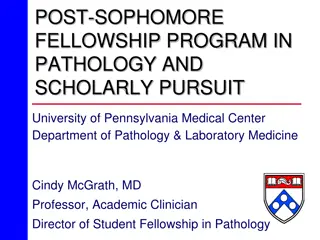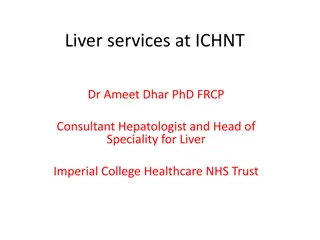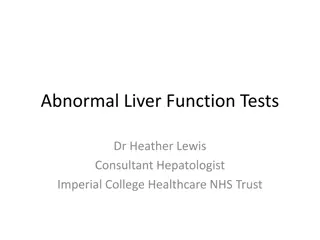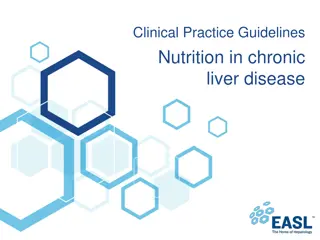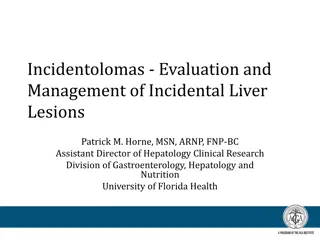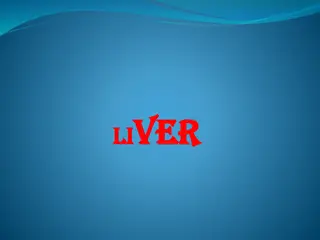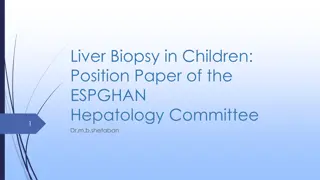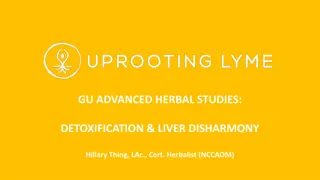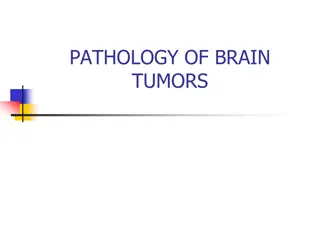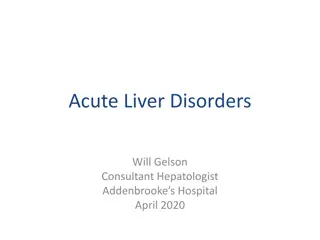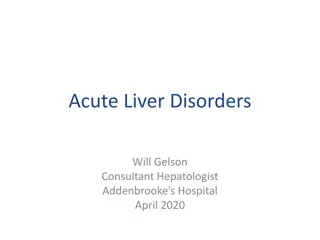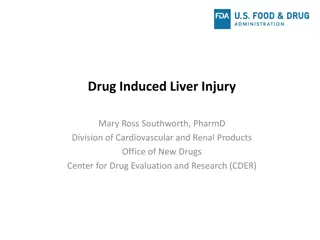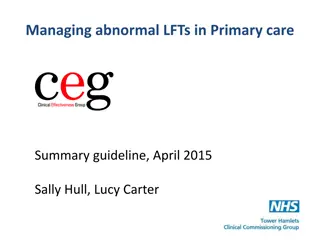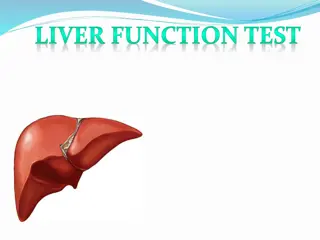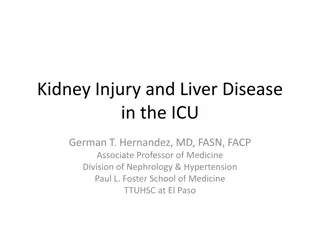Understanding Steatotic Liver Disease: Importance, Epidemiology, and Pathology
Steatotic liver disease, including metabolic dysfunction associated steatohepatitis (MASLD) and metabolic associated alcoholic liver disease (MALD), is a common cause of liver test abnormalities in the United States. Risk factors such as obesity and metabolic syndrome can lead to advanced fibrosis and increased mortality. The prevalence of MASLD and non-alcoholic fatty liver disease (NAFLD) is on the rise globally, highlighting the importance of understanding and addressing these conditions.
Download Presentation

Please find below an Image/Link to download the presentation.
The content on the website is provided AS IS for your information and personal use only. It may not be sold, licensed, or shared on other websites without obtaining consent from the author. Download presentation by click this link. If you encounter any issues during the download, it is possible that the publisher has removed the file from their server.
E N D
Presentation Transcript
Steatotic liver disease Sandeep Mukherjee,MD CHI Health Creighton University Division of Gastroenterology
Disclosures Section editor: Dynamed Plus
Objectives Updated definitions for steatotic liver disease Why is MASLD important? Epidemiology Etiology and risk factors Natural history Pathophysiology Diagnosis-invasive vs non-invasive Treatment-current and future Summary
Revised classification of Steatotic liver disease STEATOTIC LIVER DISEASE MASH Met-ALD MASLD Metabolic dysfunction associated steatohepatitis Metabolic associated alcoholic liver disease (MASLD + >210 g alcohol (M) or 140g (F) per week Metabolic dysfunction associated steatotic liver disease (hepatic steatosis + >1 cardiometabolic risk factor)
Why is MASLD important? Most common cause of elevated liver tests in United States (20-30% of population have MASLD) Risk factors: obesity, metabolic syndrome Advanced fibrosis (MASH) can occur in patients with risk factors with NORMAL liver tests 1 in 5 (20%) MASLD patients have MASH 1 in 25 MASH (4%) patients progress to advanced fibrosis/cirrhosis MASH is one of the leading indications for liver transplantation in the United States Lean patients can also develop steatotic liver disease Remember: MASH with advanced fibrosis associated with increased mortality (non-liver and liver related)
Pathologyof MASLD and MASH Rinella ME.Nonalcoholic Fatty Liver Disease A Systematic Review. JAMA. 2015;313:2263-2273
Epidemiology Prevalence of obesity increasing in developed (29 to 37%) and developing countries (8-13%) from 1980- 2013 Paralleled by increasing prevalence of NAFLD influenced by screening test e.g. 30% by MRI in Dallas Heart study 2004; 46% by ultrasound 2011 Prevalence of MASH more challenging as biopsy historically required USA: 12% prevalence in middle aged patients, 56-69% if diabetes present and advanced fibrosis in 37-50% Bazick J et al. Clinical model for NASH and advanced fibrosis in adult patients with diabetes and NAFLD/ Diabetes Care 2015;38:1347-55
Epidemiology Prevalence of both MASLD and MASH underestimated in the United States Up to 100 million adults may have MASLD and up to 25 million with MASH Approximately 750,000 have stage 2 or higher fibrosis (scale from 0-4; 4 is cirrhosis) Rinella ME.Nonalcoholic Fatty Liver Disease A Systematic Review. JAMA. 2015;313:2263-2273
Etiology and risk factors Most common: obesity and insulin resistance Can MAFLD/MASH occur in patients with a normal BMI? Younger patients, not obese, elevated liver tests and fatty liver on imaging . think outside the box Ye Q, et al. Global prevalence, incidence, and outcomes of non-obese or lean non-alcoholic fatty liver disease: a systematic review and meta-analysis. Lancet Gastro Hepatology 2020: 5:739-52
Angulo P. Non alcoholic fatty liver disease. NEJM 2002;346:1221-31
Natural history Good news and bad news Good news-vast majority of MASLD patients progress slowly or not at all 70-75% with MASLD have isolated steatosis +/- inflammation Steatosis only: zero to minimal progression Steatosis +/- inflammation: some will progress but much longer than biopsy proven MASH
Natural history MASH patient with fibrosis at baseline: different prognosis Fibrosis progresses by 1 stage every 7 years but may be an under-estimate 33 year follow-up study from Sweden; fibrosis was a strong predictor of (1) overall mortality (2) cardiovascular disease (3) infectious disease (4) cirrhosis (5) hepatoma One of the most common indications for liver transplantation in US Ekstedt M, et al. Fibrosis stage is the strongest predictor for disease specific mortality in NAFLD after up to 33 years of follow up. Hepatology 2015;61:1547-54 Wong RJ, et al. NASH is the second leading etiology of liver disease among adults awaiting liver transplantation in the US. Gastroenterology 2015;149:278-81
Advanced fibrosis and mortality Dulai et al .Increased risk of mortality by fibrosis stage in nonalcoholic fatty liver disease. Hepatology 2017;65: 1557-65
Advanced fibrosis from MASH-smaller subset but higher risk for complications from liver disease Sanyal AJ, et al. NEJM 2021;385:1559-69
Natural history Sanyal AJ, et al. Hepatology 2019;70:1913-27
Leading indications for liver transplantation in the United States 2012-2016 Cholankeril G, et al. Alcoholic liver disease replaces hepatitis C virus infection as the leading indication for liver transplantation in the United States. Clin Gastroenterol Hepatol 2018;16:1356-8
Pathophysiology of NASH At the adipocyte level, metabolic dysregulation due to impaired insulin postreceptor signaling leads to excess lipolysis of triglycerides (TGs) and NEFA release into the circulation. Albumin-bound NEFAs are delivered to the liver. Hepatocyte NEFA uptake is mediated by fatty acid transport proteins, cluster of differentiation 36 (CD36), caveolins, and to a lesser extent passive diffusion. De novo lipogenesis (DNL) from glucose and fructose occurs in the hepatocytes and is increased in subjects with NAFLD.9Unlike glucose, entry of fructose metabolites into the DNL pathway is not regulated by glycolysis.Fructose also induces the carbohydrate response element binding protein independent of insulin and promotes hepatic steatosis. The predominant fate of NEFAs in the liver is to either undergo mitochondrial beta-oxidation or be esterified to form TGs. Partitioning of NEFAs into other lipid classes, such as phospholipids and ceramides, is also increased by enhanced NEFA influx into the liver. TG synthess, a relatively inert storage form, appears to be an adaptive mechanism to protect the liver from toxic lipids. TGs can be exported as VLDLs or stored as lipid droplets. Lipolysis of these droplets releases NEFA back into the hepatic pool, and the regulation of this step is important in the pathogenesis of NASH.
Pathophysiology of NASH Konerman MA et al. Pharmacotherapy for NASH: current and emerging. J Hepatol 2018;68:362 75.
Pathology of NASH and disease progression Rinella ME.Nonalcoholic Fatty Liver Disease A Systematic Review. JAMA. 2015;313:2263-2273
Nonalcoholic fatty liver disease Activity Score (NAS) LIVER HISTOLOGY Steatosis 0-3 Lobular inflammation 0-3 Ballooning 0-2 NAS score 0-8 [NASH >5?] Brunt R, et al. Hepatology 2011;53:810-20
Diagnosis of MASH Non-invasive Serum markers Imaging modalities utilizing shear wave technology US, CT,MRI Invasive (liver biopsy) Low risk but not inconsequential Inconvenience for patient with morbidity EASL Clinical Practice Guidelines on non-invasive tests for evaluation of liver disease severity and prognosis. J Hepatol 2021;75:659-89
Features of good non-invasive tests Anstee QM, et al. Hepatology 2019;70:1521-30.
Serum markers 1. APRI >0.87 (AST,Plt) 2. FIB-4 (Age, AST, ALT, plt ) >2.67 3. NAFLD Fibrosis score > 0.67 (Age, BMI, impaired fasting Glc or diabetes, AST, ALT ratio, plt, albumin) 4. BARD score (BMI, impaired fasting glucose or diabetes, AST,ALT ) 5. AST/ALT ratio http:gihep.com /http:mdcalc.com
Imaging modalities 1. Vibration controlled transient elastography (VCTE/Fibroscan) FDA approved 2. Magnetic resonance imaging (a)Magnetic resonance elastography (MRE) (b)MRI based Liver MultiScan
Vibration controlled transient elastography CAP score: Reference Ranges: Disease F0 - F1 F2 F3 F4 dB/m Steatosis grade %age of fatty liver 238-260 S1 11-33 260-290 S2 34-66 >290 S3 >67 HBV < 6.0 > 6.0 > 9.0 > 12.0 HCV < 7.0 > 7.0 > 9.5 > 12.0 Co-HCV/HIV < 7.0 < 10.0 > 11.0 > 14.0 Cholestatic < 7.0 > 7.5 > 10.0 > 17.0 NAFLD/NASH < 7.0 < 10.0 > 10.0 > 14.0 Alcohol <7.0 <11.0 <19 >19
MRI based Liver MultiScan Measures iron and fat with a novel method for calculating inflammation and fibrosis using corrected T1 technique Quantitates iron content, fat and fibrosis Banerjee R, et al. Multiparametric magnetic resonance for the noninvasive diagnosis of liver disease. J Hepatol 2014;60:69-77
MASLD/MASH Clinical Pathway Kanwal F, et al. Clinical pathway for risk stratification and management of patients with NAFLD. Gastroenterology 2021;165:1657-69
Primary Care MASLD/MASH Clinical Pathway in United Kingdom Theodoreson M, et al.Non alcoholic fatty liver disease: leading the fight in primary care. BJGP 2022;72:499-501
Treatment of MASH -directed at pathophysiology Konerman MA et al. Pharmacotherapy for NASH: current and emerging. J Hepatol 2018;68:362 75.
Treatment-current and future Risk factor reduction (obesity, insulin resistance) Weight loss effective in improving NASH 3% wt.loss: steatosis (35-100%) 5% wt.loss: inflammation, ballooning (41- 1005) 7% wt.loss: resolution of NASH (64-90%) 10% or wt.loss: fibrosis (45%) Vilar Gomez E, et al. Weight loss through lifestyle modification significantly reduces features of nonalcoholic steatohepatitis Gastroenterology 2015;149;367-78
Current Treatment However .. No specific diet produces benefit in absence of weight loss; role of Mediterranean diet Recommend net negative of 500 kcal per day with limiting fructose and increase in physical activity Most patients unable to achieve or maintain weight loss-refer to bariatric program Dudekula A, et al. Weight loss in NAFLD patients in an ambulatory care setting is largely unsuccessful but correlates to the frequency of clinic visit. PLoS One 2014;9:e111808
Current Treatment Morbidly obese individuals with MASH- bariatric surgery may be appropriate (not specifically for MASH alone) Diabetics with MASH-Pioglitazone, GLP- 1,SGLT2 inhibitors Pioglitazone and Vitamin E-studied in PIVENS trial but limitations No FDA approved medications for MASH Sanyal AJ, et al. Pioglitazone, vitamin E or placebo for NASH. NEJM 2010;363:1675-85
The Future Exciting time for NAFLD Multiple compounds in various stages of development (>20) >1 medication may be required (complex pathophysiology, MASH with/without cirrhosis)
Teaching points MASLD is a public health problem (adults and children) 2nd most common cause of liver transplantation in the United States Awareness of role of non-invasive tests in MASLD MASH patients with fibrosis at highest risk for disease progression Refer patients with MASH to specialty clinics and clinical trials AASLD Practice Guidance on the clinical assessment and management of nonalcoholic fatty liver disease. Hepatology 2023;77:1797-35
